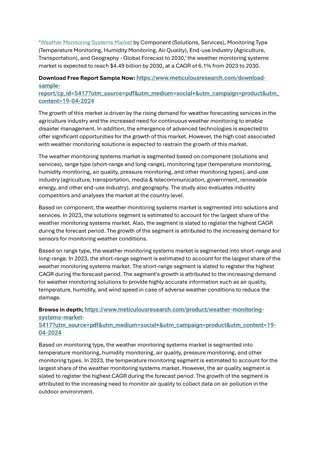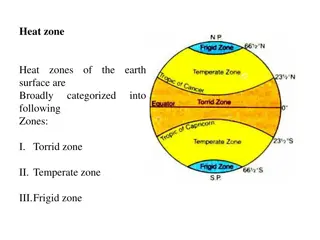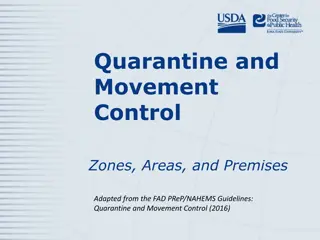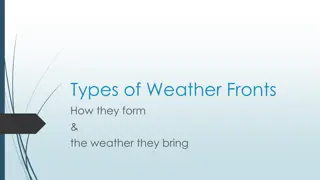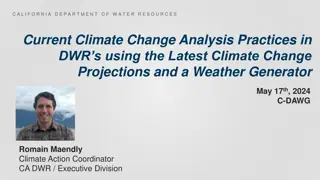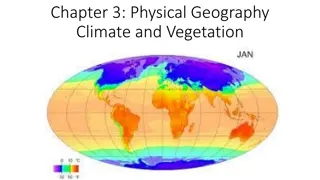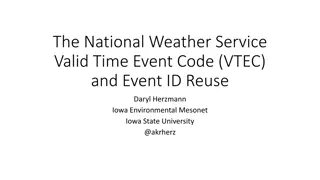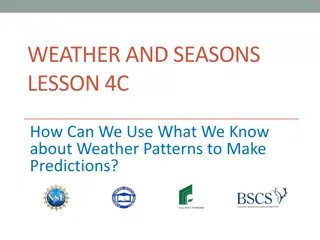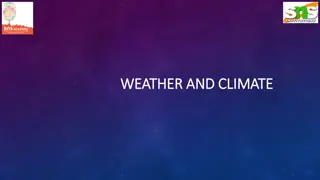Understanding Climate Change: Weather vs. Climate, Kppen-Geiger Classification, and Major Climate Zones
Explore the distinctions between weather and climate, delve into the Kppen-Geiger Climate Classification System, and discover major climate categories such as tropical climates. Gain insights into climate change and its impact on our environment.
Download Presentation

Please find below an Image/Link to download the presentation.
The content on the website is provided AS IS for your information and personal use only. It may not be sold, licensed, or shared on other websites without obtaining consent from the author. Download presentation by click this link. If you encounter any issues during the download, it is possible that the publisher has removed the file from their server.
E N D
Presentation Transcript
Learn About Global Climate Change 2022 Climate Superstars Task #1
Learning Objectives After completing this task, you will be able to Explain the difference between weather and climate. Identify and describe the climate type where you live. Cite evidence of climate change in your community.
Vocabulary Climate a description of the long-term pattern of weather in a geographic area using averages of temperature, humidity, atmospheric pressure, wind, rainfall, and other meteorological elements Climate Change long-term change in the average weather patterns that have come to define earth s local, regional, and global climates Climate Variability short-term regional changes in temperature and weather patterns (e.g. El Ni o, La Ni a) resulting from natural physical processes within earth s climate system Global Warming the long-term heating of earth s climate system observed since the pre- industrial period (between 1850 and 1900) due to human activities, primarily fossil fuel burning, which increases heat-trapping greenhouse gas levels in earth s atmosphere Weather a description of the short-term condition of the atmosphere in a geographic area using measurements of temperature, humidity, atmospheric pressure, wind, and precipitation
Weather and climate, what s the difference? Watch this video from NASA to find out. https://youtu.be/vH298zSCQzY
Climate Where You Live Having viewed the video, "What s the difference between weather and climate?" You now know the difference between weather and climate is a measure of time. Weather is the conditions of the atmosphere over a short period of time, and climate is how the atmosphere "behaves" over relatively long periods of time. The most popular system of classifying climates was proposed by Russian-German scientist Wladimir K ppen. Studying vegetation, temperature, and precipitation data, K ppen and other scientists, like Rudolf Geiger, developed a system for naming climate regions According to the K ppen-Geiger climate classification system, there are six climate zones: tropical (A), dry (B), subtropical (C), continental (D), polar (E), and highland (H).
Kppen-Geiger Climate Classification System To learn about the sub-divisions of climate categories visit: https://www.weather.gov/jetstream/climate_max.
Major Climate Categories A - Tropical Climates Tropical moist climates extend north and south from the equator to about 15 to 25 latitude. In these climates all months have average temperatures greater than 64 F (18 C) and annual precipitation greater than 59". B - Dry Climates The most obvious climatic feature of this climate is that potential evaporation and transpiration exceed precipitation. These climates extend from 20 -35 north and south of the equator and in large continental regions of the mid-latitudes often surrounded by mountains. C - Moist Subtropical Mid-Latitude Climates This climate generally has warm and humid summers with mild winters. Its extent is from 30 50 of latitude mainly on the eastern and western borders of most continents. During the winter, the main weather feature is the mid-latitude cyclone. Convective thunderstorms dominate summer months.
Major Climate Categories D - Moist Continental Mid-Latitude Climates Moist continental mid-latitude climates have warm to cool summers and cold winters. The location of these climates is poleward of the "C" climates. The average temperature of the warmest month is greater than 50 F (10 C), while the coldest month is less than -22 F (- 30 C). Winters are severe with snowstorms, strong winds, and bitter cold from Continental Polar or Arctic air masses. E - Polar Climates Polar climates have year-round cold temperatures with the warmest month less than 50 F (10 C). Polar climates are found on the northern coastal areas of North America, Europe, Asia, and on the land masses of Greenland and Antarctica. H - Highlands Unique climates based on their elevation. Highland climates occur in mountainous terrain where rapid elevation changes cause rapid climatic changes over short distances.
Climate Change When scientists talk about climate change, they are talking about changes in long-term averages of daily weather. Scientists studying global climate change watch the weather all over the world. Take a few minutes to review the following sequence of data visualizations. What pattern(s) or trends do you see in the data? To access the entire data visualization from NASA Scientific Visualization Studio, use this link: https://svs.gsfc.nasa.gov/4964.
Global Temperature Differences Normal temperatures are shown in white. Higher than normal temperatures are shown in red and lower than normal temperatures are shown in blue.
Find where you live on the map. Using the major climate categories introduced earlier, Describe the climate where you live. Action Item Using what you have learned from this task, What evidence of climate change are you aware of in your community?



